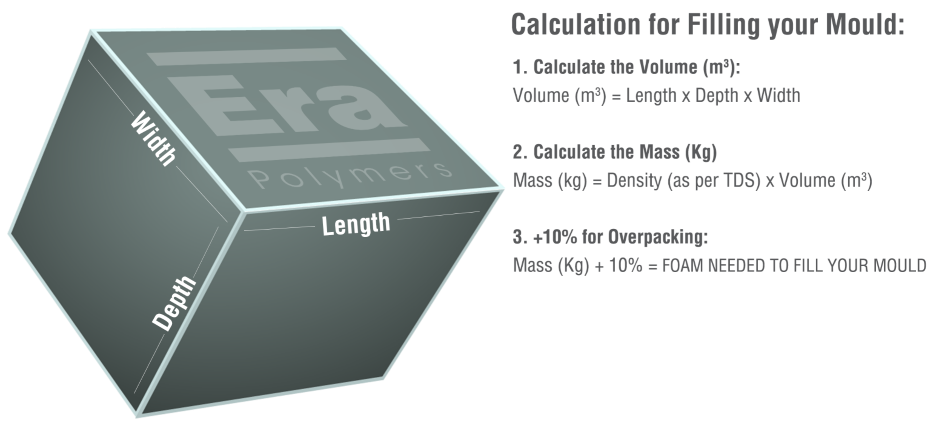1. Storage
Era Polymers foam systems are supplied as two components, labelled ISO and POLYOL. Care should be taken to keep the containers in a dry and undercover area, in the temperature range of 18-25oC (64-77oF).
Isocyanate (ISO) – The ISO component, once opened, will begin to react with moisture found in the atmosphere. This can result in the ISO crystallizing, and the reactivity of the ISO reducing to the point the material does not function properly. The crystals formed can also cause blockages in machinery filters and dispensing guns. Once an ISO container is opened, it is good practice to preserve the unused material by using a nitrogen or dry air blanket to re-seal the pack, or to use a dessicant cartridge to ensure any air entering the partial drum is dry. Please contact Era Polymers representative for further advice.
Polyol (POLYOL) – The POLYOL component contains the low boiling point “blowing agents” used to expand the foam. At elevated temperatures, the blowing agents can cause pressure to build in the drum, caution should be exercised when opening the drum in case of any internal pressure.
2. Chemical Reaction
When the ISO component is mixed with the POLYOL component the chemical reaction starts. The reaction is exothermic meaning it produces heat. As the chemical reaction progresses the viscosity (measure of liquid ‘thickness’) of the mixture will also increase. This continues during the foaming process until the reacting liquid turns into the polyurethane solid at the end of the reaction.
In order to achieve a good quality foam, the temperature of the components should ideally be around 20-25oC (68-77oF). If they are colder than this, the material will be thicker and more difficult to blend, and the final yield of the foam will be less.
If the temperature of the chemicals is above 25oC (77oF) the reaction time of the formulation will become faster, which should be taken into account for individual customers circumstances.
3. Mixing Process
It is important to mix the POLYOL and ISO component efficiently, and unlike polyurethane elastomers it is also important to mix in air. This incorporation of air is called ‘nucleation’ and is observed as tiny bubbles trapped in the mixed liquid. These act as growth points for the bubbles produced during the foaming reaction and result in the cellular structure of the foam.
Hand Mixing – Many systems have a slow enough cream time which enables them to be hand mixed. For hand mixing, a drill capable of speeds of over 2000rpm should be used. Generally the stirrer used should have a diameter equivalent to half the diameter of the bucket or container.
Machine Mixing – By far the best quality foams are produced through machine dispensing. The two types of machines we offer are Cannon from Italy (high and low pressure mixing) and Gama from Spain (high pressure mixing). Please click here for more information on the machinery.
4. Moulding
In most cases the polyurethane foam will be poured into a mould. Moulds can be made from various materials such as timber (sealed), fibreglass, epoxy and metal. All moulds need to be treated with a “release agent” before the foam is poured in, to prevent the foam from sticking to the mould. Era Polymers supplies a range of release agents for this purpose.
Filling a Mould
The amount of foam required to fill a mould needs to be calculated (see calculation below). It is then common practice to increase this by 10%, so that once this foam is poured into the mould, the part produced will have a 10% overpack. This ensures that the foam fills the mould properly and that the cell structure of the foam is uniform.
The more overpack in a mould, the greater the pressure the foam will exert on the mould. 10% overpack is common and most moulds will cope with this, but when higher overpack rates are used the mould and its closures need to be designed accordingly.


